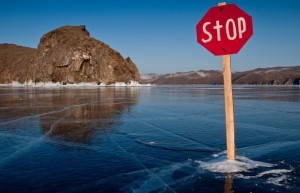How to reach us
117 Uritskogo Str.
Krasnoyarsk, RUSSIA
- e-mail:
- info@sayanring.com
- Open hours:
- Monday-Friday 10 am-7 pm
- Sat 11 am - 4 pm
- Sun - day off
Baikal’s treasures in winter
 Plunging downwards for more than a kilometer, Baikal is the deepest lake in the world, holding about 23,000 cubic kilometers of water – more than the five North American Great Lakes combined. More than 300 rivers flow into LakeBaikal, but only one – the Angara – flows out, eventually draining into the Arctic Ocean far to the north. Geological activity means the lake’s floor keeps dropping a little each year, and the water is so clear in places that you can often see objects 40m below the surface.
Plunging downwards for more than a kilometer, Baikal is the deepest lake in the world, holding about 23,000 cubic kilometers of water – more than the five North American Great Lakes combined. More than 300 rivers flow into LakeBaikal, but only one – the Angara – flows out, eventually draining into the Arctic Ocean far to the north. Geological activity means the lake’s floor keeps dropping a little each year, and the water is so clear in places that you can often see objects 40m below the surface.
Thick ice starts to form at the edges of the lake in December, and by early January the entire surface has frozen solid, remaining this way until April or early May. The surface becomes so thick that locals use it as a highway. In fact, a temporary railroad was once laid over the lake’s icy crust during the 1904 to 1905 Russo-Japanese War. Here, a boat is hauled up on the shore in Listvyanka , the most popular tourist town on the lake.
 The city of Irkutsk , located about 70km northwest of the southern end of LakeBaikal, is thegateway to the region for most travellers. Trans-Siberian trains stop here en route to Moscow (approximately five days heading west), Vladivostok (two to three days heading east) or and Ulaan Baatar (30 hours) and Beijing (60 hours) heading south-southeast.
The city of Irkutsk , located about 70km northwest of the southern end of LakeBaikal, is thegateway to the region for most travellers. Trans-Siberian trains stop here en route to Moscow (approximately five days heading west), Vladivostok (two to three days heading east) or and Ulaan Baatar (30 hours) and Beijing (60 hours) heading south-southeast.
Many travellers choose to spend a day or two exploring Irkutsk’s onion-domed cathedrals, classical facades and storybook wooden architecture, typical of Russia’s imperial era.
Originally shamanists, many Buryats gradually adopted the Buddhist faith of their Mongolian neighbours. Despite the best efforts of Soviet-era anti-religious purges, many vestiges of shamanism are still evident across Buryatia. Shamanistic sites known as ovoos still attract pilgrims, who decorate the trees with ribbons and scraps of cloth as prayers and offerings to the spirits.
Source: rustourismnews.com




